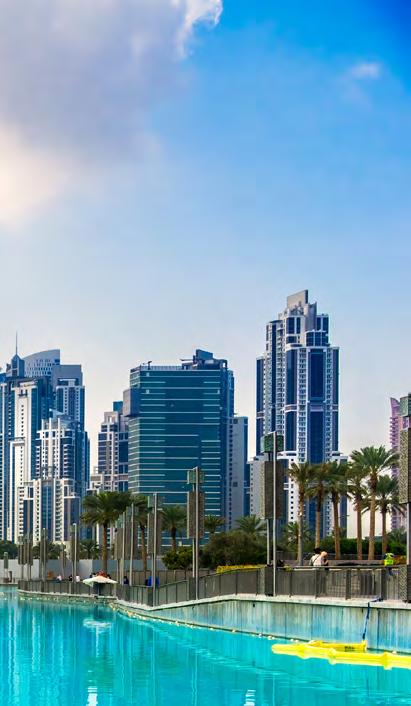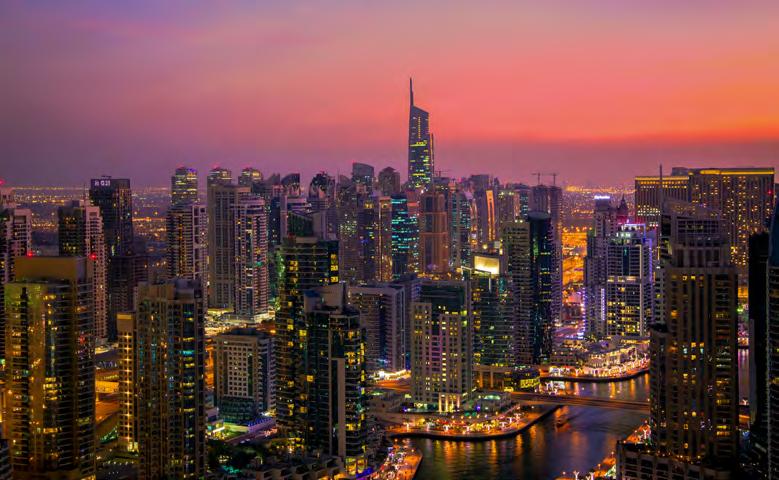
4 minute read
TALKING POINT
Sustainability THINKING LONG-TERM
Sustainability is an essential design philosophy that influences the construction sphere within the Middle East. The implementation of green energy, eco-friendly strategies, and sustainable rating measures have significantly affected the way that the region drives development long-term. In fact, sustainability and green strategies have the power to unlock close to US$3 trillion in economic development by 2030, which is why cities such as Dubai and Abu Dhabi are leading the way.
With rising energy demand and increased urbanisation, developers are also focusing on sustainability from a strategic perspective. Along with green materials and natural landscaping, sustainability is being driven right from the planning stage. The top architecture firms in Dubai, such as Prasoon Design, are specialising in planning the right layout, orientation, methodology, and approach to ensure long-term sustainability.
The region has historically focused on introducing new measures and guidelines to implement eco-friendlier design and construction. Using indigenous materials, new technologies, and recycled components, the Middle East’s architects are redefining the limits of sustainability. They are innovating not only on the aesthetics front but also in the longevity and ecological balance sphere as well. Impacting Policymaking in the Region The construction industry in the Middle East works within specific guidelines that govern its practices across residential, commercial, industrial, and infrastructure spheres. In terms of policymaking, sustainability is a key driver of the region’s long-term goals and vision. Saudi Arabia and UAE’s Vision 2030 includes plans to enhance renewable supply by 30%, with Dubai focusing on 75% clean energy by 2050. Sustainability also shapes many of the policies around energy consumption, the use of new technologies, innovative materials, and novel construction practices. Sustainability is helping drive the industry forward by aiding in the formation of longevity-focused guidelines. The Pearl rating system is the ideal example of this, giving developers points for specific objectives that can be analysed and approved during development.
Promoting the Use of eco-friendly Measures The construction industry is one of the few ecosystems worldwide that

can radically transform the scope of sustainability within a region. With the industry accounting for 38% of carbon emissions, it is important to leverage the right construction methodologies and waste management strategies to ensure long-term sustainability. In fact, the construction industry has the potential to reach net-zero carbon emissions by 2050 if it follows the right practices and guidelines for sustainable development.
The construction industry in the Middle East can lead the way in achieving the region’s targets of sustainability, energy consumption, and renewable energy use. Architecture firms Dubai and Abu Dhabi based are actively working with government entities, developers, and construction material suppliers, to ensure that new projects are aligned with the region’s overall sustainability vision.
Improving adaptability to new challenges Many of the key challenges of the next few decades are going to be around sustainability and energy consumption. With the summer months accounting for 50-60% of energy use within buildings, it is important to design all future iterations of residential and construction projects to be self-sustaining. Whether through solar, wind, or an eco-friendly hybrid model, energy generation and utilisation would have to be optimised long-term.
The circular nature of construction means that developers need to focus on the entire lifecycle of the project. To implement truly impactful initiatives, such as zero waste, recycling, ecological balance, natural landscaping, zero emissions, and resource efficiency, developers need to be adaptable to new challenges. Developers that overcome challenges of the future in the present are also more likely to attract investment within the region for largescale construction projects.
Innovative Materials Use within the Region
The construction industry is a highly innovative sphere within the Middle East, focusing on using the best materials that are sustainable, aesthetically pleasing, and durable. High-performance concrete, nanoparticles, cross-laminated timber, 3D graphene, and other innovative materials are shaping the way for the future of development. The region’s focus on leveraging these new materials is unmatched, with many new projects being designed keeping these high-insulating and lowmaintenance materials in mind.
Additionally, innovative materials are easier to store, manage, and dispose of. They are highly sustainable by design and can be recycled or demolished without releasing toxic emissions or harmful compounds in the air. With C&D waste accounting for 70% of total waste generated in the UAE, it is important to use the right materials to ensure long-term sustainability within Middle Eastern countries.
Influencing design aesthetics through sustainability Some of the most architecturally complex and aesthetically advanced projects are being designed in the Middle East owing to the region’s focus on sustainability. New geometries, shapes, layouts, and styles are being innovated to ensure that projects capture as much natural energy as possible. The balance between ecology and construction is also being promoted through sustainable architecture in the region as well.
From the exterior façade to the interior finishes, the use of innovative strategies is the key to sustainable development in the region. Both active and passive strategies are being leveraged to accomplish the goals of the construction project, with developers focusing on the right techniques to optimise energy management. Through key initiatives, such as rainwater harvesting, recycled materials, re-using of resources, solar, and water management, buildings are emerging both aesthetically superior and eco-friendlier.





